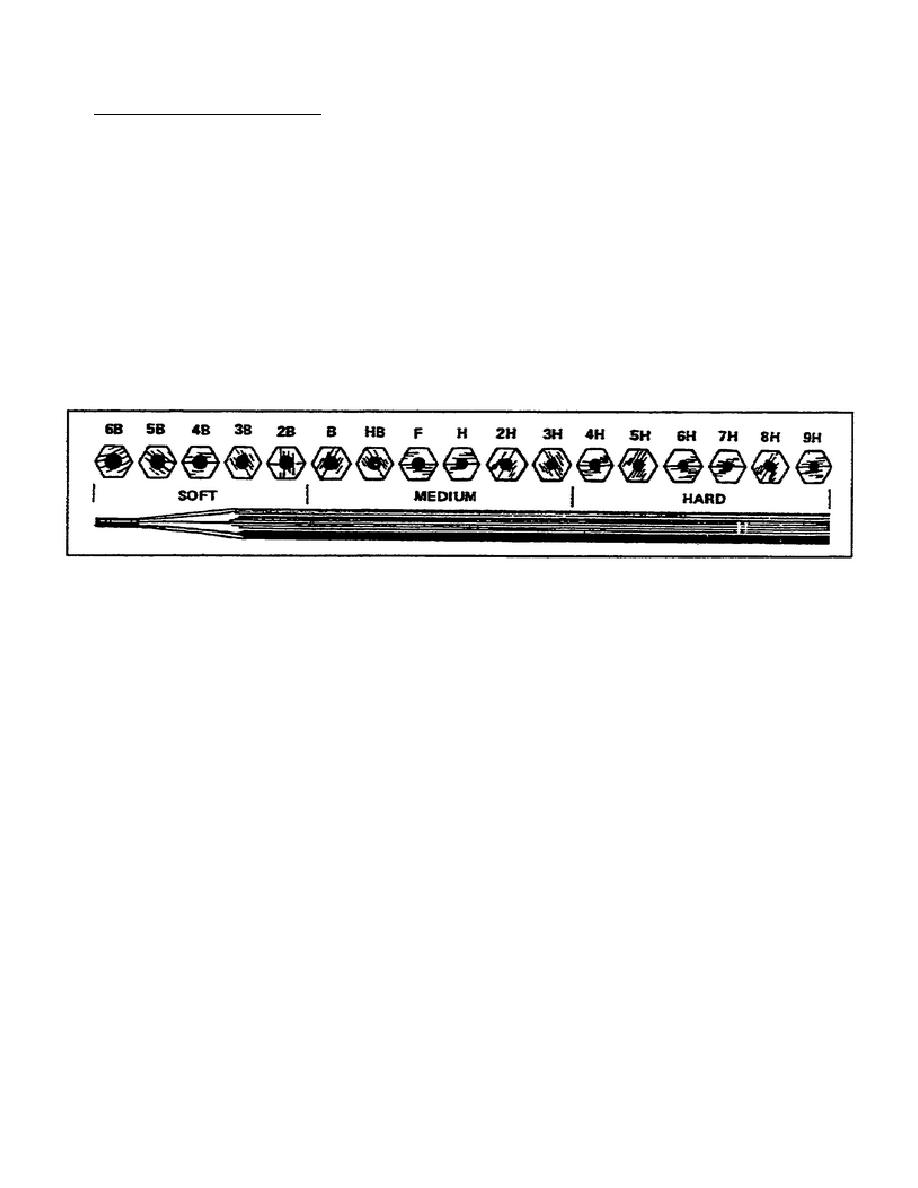
PART A PENCILS
1.
Pencil Identification.
Manufacturers make drawing pencils in a wide variety of graphite densities
(relative hardness).
For ease of identification, pencil manufacturers
stamp or emboss the hardness on the pencil.
In general, all drawing
pencils are classified as either soft, medium, or hard.
The letter "B"
denotes a soft, dark graphite; whereas the letter "H" indicates a hard,
light graphite.
In addition to the letters "B" and "H," pencils are
identified with a number that represents its relative hardness compared to
other pencils.
For example, both 2B and 6B drawing pencils are soft
pencils; however, of the two drawing pencils, the 2B is a harder drawing
pencil.
You will notice though that in the B category, the lower the
number the harder the pencil, unlike the H category. Refer to figure 2-1
that illustrates various drawing pencils.
Figure 2-1.
Drawing pencils
a. Use the following information as a general guide to select the
correct pencil. Use soft leads for illustrative drawings; they work well
for shading and toning.
Use medium leads for general purpose technical
drafting, tracing, and lettering.
Use hard leads for charts, graphs, or
diagrams that require precision.
b. Choosing the correct drawing pencil for a lettering project also
depends on the roughness of the paper. The rougher the paper, the harder
the pencil lead must be to produce quality lettering. You must choose a
pencil hard enough to prevent excessive wear of the point, but soft enough
to produce jet-black lettering. As an aid to selecting the proper pencil,
try several different pencils until you find the one that best suits the
needs of the project and paper.
c. The size of the lettering you construct for a project also affects
the drawing pencil to use.
When drawing small letters, use a drawing
pencil sharpened to either a conical or chisel point.
If you are
constructing medium-sized letters,
2-2
SS0525



 Previous Page
Previous Page
